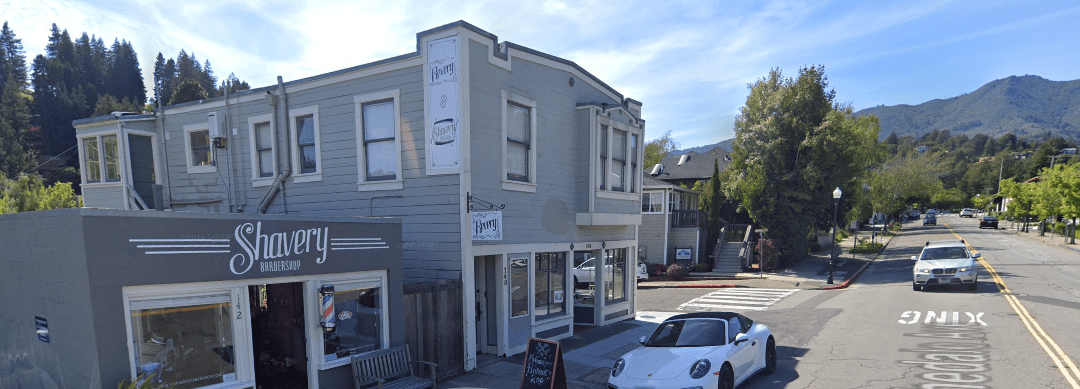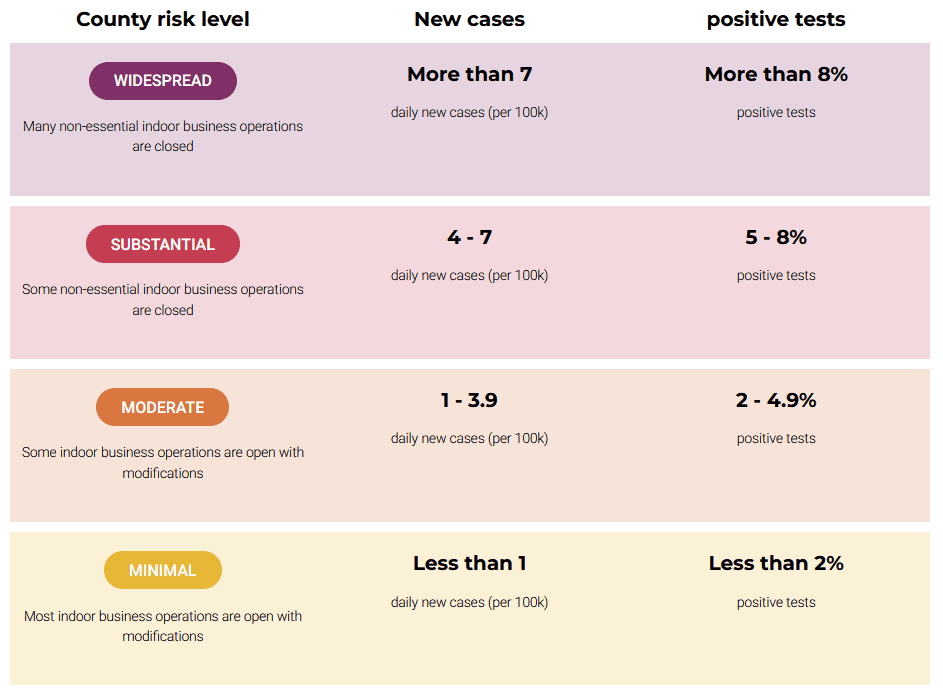Nine weeks after Marin’s hair salons and barbershops were allowed to open for the first time since March during the COVID-19 crisis, and seven weeks since they were forced to close due to then-new restrictions on Marin and all of the dozens of businesses on the statewide COVID-19 Watch List, those salons and barbershops can reopen on Aug. 31 as part of the state’s new, simplified and accelerated framework to define the metrics and subsequent restrictions on businesses.
Governor Gavin Newsom unveiled Friday the new Blueprint for a Safer Economy, which centers around four color-coded tiers (see graphic below). The framework replaces the previous “county monitoring list” as a way to measure counties’ ability to loosen and tighten restrictions on activities and business operations. In doing so, it prioritizes case rates and testing positivity rates at a more granular level while factoring in equity indicators such as high testing rate in disproportionally impacted areas. Unlike the monitoring-list model, which was based on a matrix of numbers that was difficult to parse, the new system is based largely on new daily case numbers per 100,000 residents, as well as positivity rates.
Most counties that were on the state’s monitoring list prior to the adjustment were placed on the first, or “purple,” tier, signaling a COVID-19 incidence of more than seven new cases per day per 100,000 people. Although Marin is ranked purple for now, the California Department of Public Health has confirmed Marin will move into the second – or “red” – tier in an abbreviated timeline due in part to Marin County Public Health’s high testing rates, and assuming Marin’s case rate remains stable.
The new framework eliminates the ability of county public health officials to make their own case to reopen; counties now won’t be able to move to a less restrictive tier unless they have met that tier’s criteria for at least two consecutive weeks. And each county must stay in its current tier for at least three weeks before it can move. If a county’s numbers worsen for two weeks in a row, it will be moved to a more restrictive tier.
“We’re going to be more stubborn this time,” Newsom said.
“We’ve prioritized testing from the beginning, and this is being recognized as positive sign of our response,” Dr. Matt Willis, Marin’s public health officer, said in a statement. “Yes, we’re seeing fewer cases, but we still have a long way to go. We need to protect these gains and stop transmission, so we
The state’s second most restrictive “red” tier, which currently includes San Francisco, allows some indoor dining will be allowed starting today. Gyms, houses of worship and movie theaters will also be allowed to reopen indoors with limited capacity. Marin’s likely move into the red tier would improve the chances for restaurants to offer indoor dining under strict social distancing guidelines, a salve for restaurant owners’ anxiety about the the impact of the coming winter season on outdoor dining. Indoor dining was allowed to reopen for less than a week in late June because of a spike in COVID-19 metrics.
Marin hair salons and barbershops are able to reopen indoors must follow public health guidelines prescribed by the California Board of Barbering and Cosmetology AND Marin Public Health.
Like the previous county monitoring list, schools in counties that fall within the “purple” Tier 1 are not permitted to reopen for in-person instruction unless they receive a waiver from their local health department for transitional kindergarten through sixth grade. However, schools can reopen for in-person instruction once a county has achieved “red” Tier 2 status for at least two weeks.
Marin has submitted 14 school waiver applications to the state for approval, potentially allowing those TK-6 schools to resume in-person operations as early as September 8. However, all Marin TK-6 schools would be eligible for classroom-based operations as early as two weeks after the county officially achieves “red” Tier 2 status.
For counties within the purple tier, many kinds of businesses must remain closed, unless they can operate outdoors, including restaurants. All bars, breweries and distilleries must stay closed, too, even if they have outdoor space.



